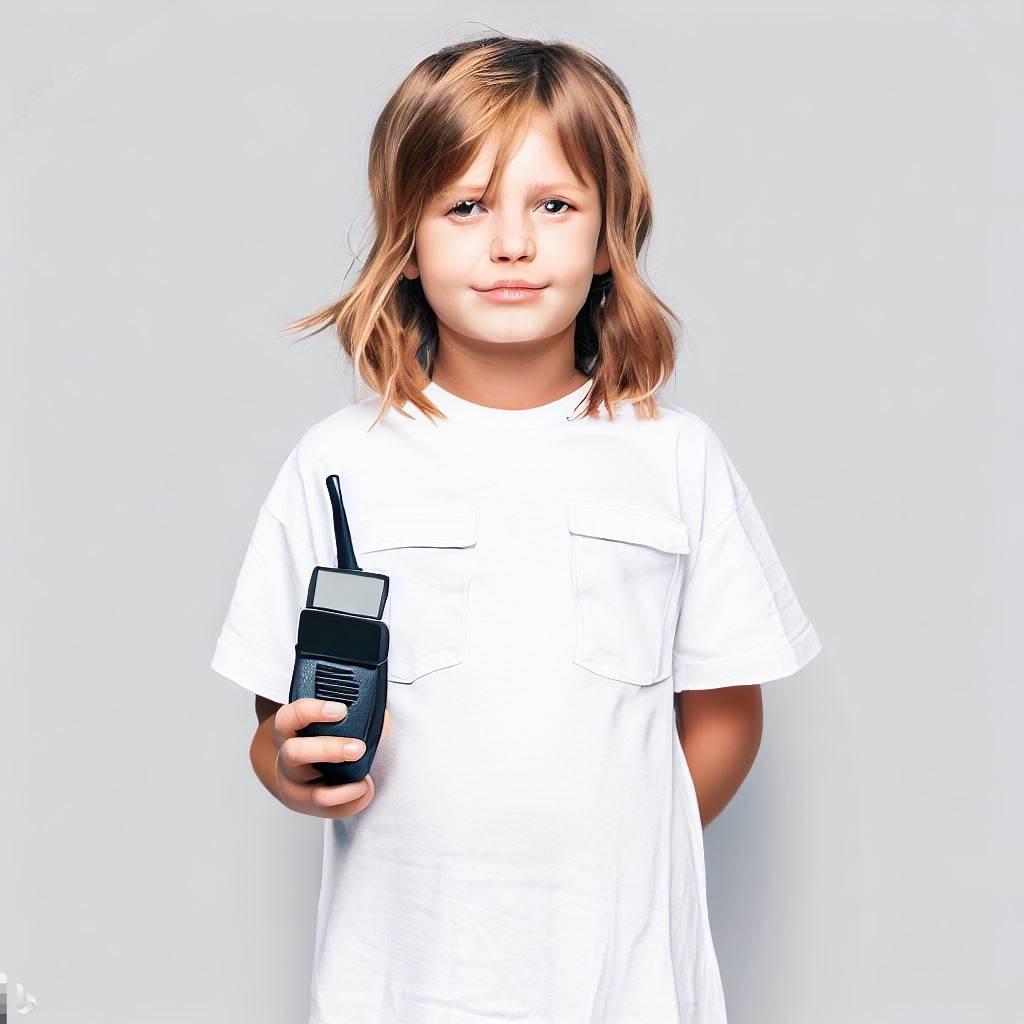Learn about Can Kid Walkie-Talkies Pick Up Other Signals. Discuss the limitations of kid walkie-talkies and the possibility of signal interference.
Kid walkie-talkies allow young adventurers to communicate and explore their surroundings, making them a beloved playtime gadget. The use of kid walkie-talkies for communication and play has become increasingly popular among children. Using these devices, kids can stay in touch with one another and engage in imaginative activities.
Can Kid Walkie-Talkies Pick Up Other Signals?
A walkie-talkie can pick up other signals only on the same frequency. Using the correct frequency on your walkie-talkie will allow you to communicate with another individual who has a walkie-talkie. Walkie-talkies can pick up FM and AM signals.

Frequency Range and Interference
A kid walkie-talkie is designed with simplicity and safety in mind. The devices operate within specific frequency bands allocated for consumer communication devices. A government agency regulates these frequency bands in order to prevent interference and ensure the security of communication.
The devices typically operate on the frequency bands of the Family Radio Service (FRS) and the General Mobile Radio Service (GMRS). A short-range communication band is used for these purposes, which differs from the frequency used by cell phones or professional radio systems. A difference in modulation and encoding makes it difficult for walkie-talkies to intercept signals from other devices due to their design.
Quality Matters
The quality of kid walkie-talkies plays a vital role in determining their ability to pick up unintended signals. A good quality walkie-talkie will generally have features that minimize interference and provide a better signal. It is possible to greatly reduce the likelihood of picking up unwanted signals by investing in reputable brands that have robust communication systems.
The Potential for Signal Interference
A kid’s walkie-talkie operates on a particular radio frequency that is designated for consumer use. These frequencies are, however, not entirely free from interference from other electronic devices. It is essential to be aware of the factors that may contribute to signal interference, even though the odds of picking up signals from unrelated sources are relatively low:
1. Proximity to Other Devices:
The use of kid walkie-talkies near other electronic devices, such as cordless phones, baby monitors, or even Wi-Fi routers, may lead to overlapping signals.
2. Overlapping Frequencies:
Some electronic devices can operate on frequencies that are comparable to those used by walkie-talkies. The proximity of these devices can result in unintended reception of signals.
3. Environmental Factors:
The strength and clarity of the signal can be negatively impacted by physical barriers such as buildings, hills, and dense foliage. An increase in interference is likely to occur in urban areas with multiple wireless signals.
4. Weather Conditions:
The conditions in the atmosphere can affect the propagation of radio waves. It is important to consider this in areas with extreme weather conditions, although it is more common in long-range communications.

Tips to Minimize Signal Interference
The following tips will help you ensure seamless communication with kid walkie-talkies:
- Choose the Right Channel: A walkie-talkie for children usually offers multiple channels. You may want to experiment with different channels to find which one has the best reception.
- Keep a Safe Distance: The device should be kept at a distance from other electronic devices to minimize the risk of signal interference.
- Use Reputable Brands: It is recommended that you use well-known and reputable brands that adhere to frequency regulations to reduce the likelihood of unwanted reception of signals.
- Ideal Terrain: Use kid walkie-talkies in open areas with minimal obstructions to achieve the best possible signal transmission.
- Monitor Battery Life: A low battery level may affect the strength of the signal. Battery maintenance should be performed regularly, such as charging or replacing them.
Limitations of Kid Walkie-Talkies
The use of kid walkie-talkies has the potential to intercept unintended signals, but it is important to be aware of their limitations.
- Short Antennas: Walkie-talkies for children typically have shorter antennas, which makes them less effective at capturing weaker signals.
- Lack of Selectivity: It is possible that these devices do not possess the selectivity necessary to eliminate unwanted signals.
- Basic Circuitry: Models designed for children often feature basic circuitry that does not utilize advanced filtering technology.
Can kid walkie-talkies receive signals from baby monitors?
It should be noted that most baby monitors have a very limited range – they will work well when you are within a house and you only need to receive signals from one floor to another. The walkie-talkie can be used to listen to your baby over a long distance!
Are there any privacy concerns with kid walkie-talkies?
A walkie-talkie may have a privacy code in addition to a variety of channels, but it is important to note that these are not completely secure. You should make sure your children are aware of what to do if they are the subject of an eavesdropping or communication attempt by someone unknown.
Do weather conditions affect kid walkie-talkie performance?
The weather conditions can affect the strength of the signal, however, modern kid walkie-talkies are designed to maintain reliable communication irrespective of the conditions.
What should I do if I suspect interference with my kid’s walkie-talkie?
You should immediately turn off a walkie-talkie if it is suspected that it may interfere with your communications.
Conclusion
The concern about intercepting other signals remains largely unfounded in the realm of kid walkie-talkies. Designed for safe and secure communication within their assigned frequency bands, these devices ensure a private and secure connection. The use of technical barriers, filters, and modulation techniques safeguards against the interception of unwanted signals.
The reception of signals from kid walkie-talkies may be affected by certain factors, but they are not designed to intercept signals from unrelated sources. You can be assured that your little explorers’ walkie-talkies are only tuned into their own conversations, whether on adventures or coordinating backyard activities.





